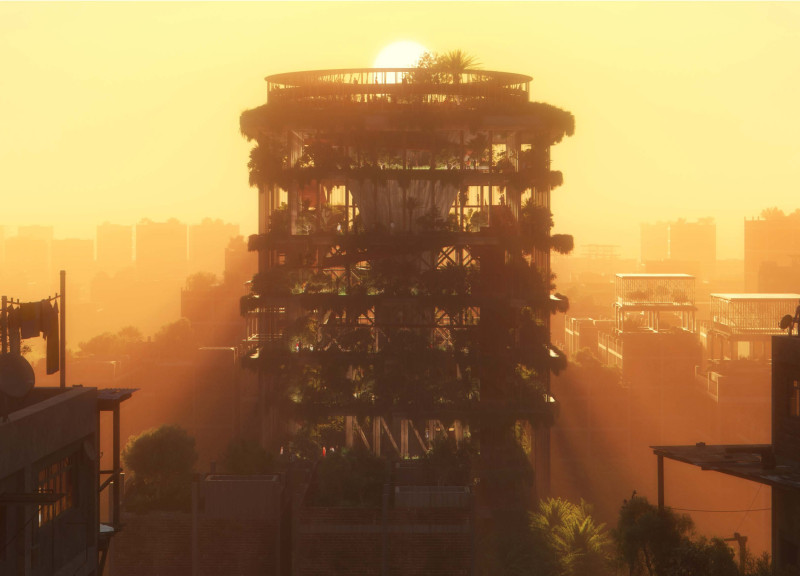5 key facts about this project
At first glance, the architecture displays a harmonious balance between aesthetic appeal and practicality. The façade captures attention with its use of natural materials that resonate with the surrounding landscape. Emphasizing local identity, the choice of materials such as reclaimed wood, steel, and glass not only supports the sustainability goals of the project but also melds seamlessly with its environment. This deliberate selection of materials plays a crucial role in the building's overall performance, enhancing thermal efficiency and minimizing the carbon footprint.
The layout of the project is carefully designed to facilitate a flow of movement that encourages exploration. Open spaces are paired with intimate zones, creating a variety of settings for different activities, from collaborative work to quiet reflection. Large, strategically placed windows illuminate the interior spaces with natural light, fostering a connection to the outside environment. This intentional design decision encourages occupants to appreciate their surroundings while enhancing their overall experience within the building.
Unique to this architectural endeavor is its engagement with the community. Spaces such as a public plaza and green areas are incorporated into the design, inviting both users and passersby to interact with the structure. This aspect emphasizes the building's role as a communal asset rather than just a physical structure. The inclusion of outdoor spaces not only promotes social cohesion but also serves as an environmental buffer, reducing urban heat and enhancing biodiversity.
The roof design deserves particular mention, as it incorporates innovative green technology, such as photovoltaic panels and extensive vegetation. This element not only contributes to energy efficiency but also promotes biodiversity by creating habitats for local flora and fauna. In addition, the roof's design enhances rainwater management, addressing the ecological impact of urban development.
Internally, the architectural design prioritizes flexibility and adaptability. Moveable walls allow spaces to transform according to user needs, facilitating everything from workshops to exhibitions. The use of modular furniture further supports this versatility, making it possible to customize spaces for various occasions.
Moreover, the project's alignment with contemporary architectural ideas is evident through its commitment to sustainability, community integration, and user-centric design. The architectural sections reveal careful consideration of scale and proportion, ensuring that spaces feel welcoming and inclusive. At the same time, thoughtful acoustic design enhances the comfort of occupants, acknowledging the importance of soundscapes in shared environments.
The overall outcome of this architectural project showcases a nuanced understanding of contemporary needs, blending functional requirements with artistic expression. It stands as a testament to effective architectural design that respects its site context while meeting the diverse demands of its users. For those interested in delving deeper into this project, examining the architectural plans, sections, and specific design elements will provide a clearer picture of the innovative strategies employed throughout the development process. Exploring these facets can offer valuable insights into the architectural ideas that underpin this compelling design.


 Stavros Velegrinis
Stavros Velegrinis 




















